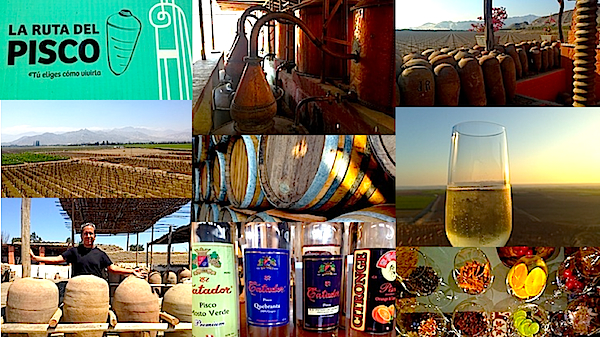You can make all the Pisco cocktails in the world, but if you want to understand Pisco, really experience it like never before, and get a sense of its unique history and terroir, then you need to explore the Pisco Trail and travel to its birthplace — the Ica Valley of Peru. Here, for centuries, haciendas at the foothills of the Andes mountains have been growing grapes, making wine, and of course distilling it into Pisco. And a visit to the wineries in the Ica Valley will teach you about four essentials: technique, history, craft, and terroir.
Start at Vista Alegre, a former Jesuit Monastery dating back to the 1700’s that eventually became a winery in 1857. Here, three grape varietals are grown and made into wine: Quebranta, Italia, and Torontel. The wine is then distilled into Pisco using copper alembics heated by steam. The method is ancient, traditional, and precise. And here is where you will learn about technique, from harvesting, to crushing, to fermentation, to distillation.
Then stop by Tacama, one of the oldest wineries in South America, a former Augustine Monastery that began wine production in the 1600’s. This place is filled with traditions that are associated with wine making, such as the famous Peruvian step horses that put on shows for the visitors. A museum with antique wine making machinery pays homage to the past, and here is where you will learn about the history of wine which is intertwined with the history of Pisco.
Next, is El Catador, which includes Tres Generaciones, a smaller, craft winery and distillery. Here, they use a falca instead of an alembic, which is said to intensify the flavor profiles of the Torontel, Quebranta, and Moscatel grapes used for their Pisco. But, being an artisanal hacienda, they also employ an aromatization technique to infuse the Pisco with fruit flavors. With limited production, this place is proof that indeed good things come in small packages.
Last stop is Viñas Queirolo, founded in 1880 by a family from Genova. Initially, they produced white wine, red wine, and sparkling wine, before distilling Pisco. Here you will participate in a cata, where you will learn how to observe, smell, and taste the wine. Limes, apples, pineapples, jasmine, and pecans in wine glasses will hint at the aromas and flavors in the wine. And this experience will bring it back to the land, to the terroir that makes Pisco unique.
After you visit these haciendas on the Pisco Trail, you will be changed forever. No matter where you live, or where you are in the world, every Pisco cocktail you drink will taste differently, it will have a sense of place, a sense of history, and drinking the Pisco will transport you back to the land where Pisco was born. So if someone asks you why you are smiling when you are taking a sip of a Pisco Sour or a Pisco Punch, just close your eyes and whisper to them: “I am traveling to the Ica Valley of Peru.”
